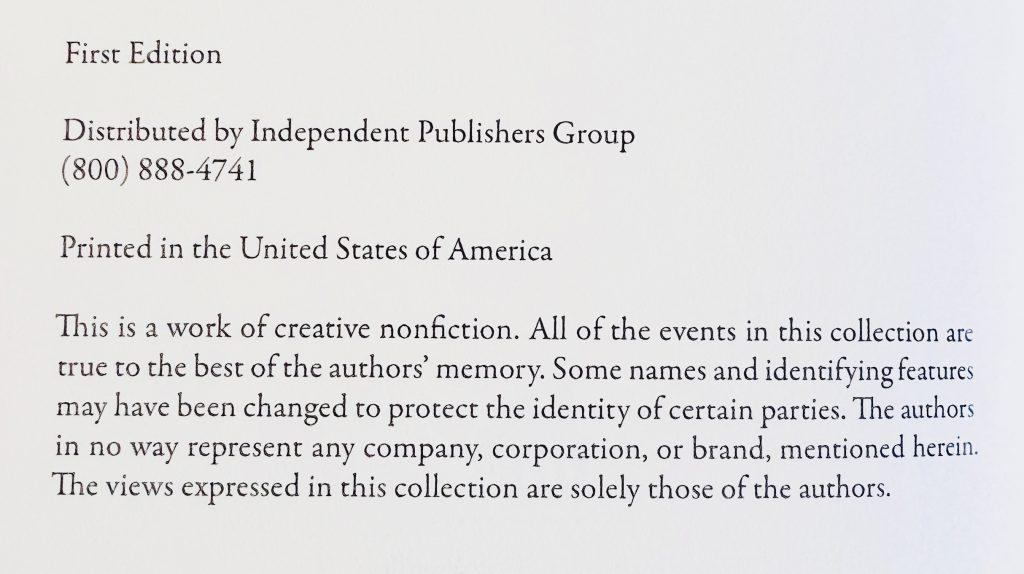In the ever-evolving landscape of thriller fiction, where suspense and intrigue reign supreme, a single word has emerged from the shadows to captivate the imaginations of fans worldwide: “Disclaimer.” Once a humble prelude to the pulse-pounding narratives we crave, this term has transcended its traditional role, becoming a phenomenon in its own right. But why is “Disclaimer” suddenly on the lips of every thriller aficionado? Is it a clever marketing ploy, a reflection of our cautious times, or something far more intriguing? As we delve into the heart of this trend, prepare to uncover the layers of mystery and meaning that have propelled “Disclaimer” from the fine print to the forefront of the thriller genre. Join us as we unravel the enigma behind this unexpected buzzword and explore its impact on the stories that keep us on the edge of our seats.
Unraveling the Allure of Disclaimers in Modern Thrillers
In the ever-evolving landscape of modern thrillers, one might wonder why the seemingly mundane concept of a “disclaimer” is capturing the imagination of fans. This narrative device, often relegated to the background, has emerged as a pivotal element that not only adds depth but also heightens the suspense in storytelling. Disclaimers serve as a bridge between reality and fiction, blurring the lines and inviting readers to question the boundaries of the narrative world.
One of the key reasons for the allure of disclaimers is their ability to engage the audience’s curiosity. When a story begins with a disclaimer that warns of disturbing content or suggests a connection to real events, it piques interest and sets the stage for a thrilling experience. Readers are drawn into a web of intrigue, eager to decipher which elements are factual and which are the product of the author’s imagination. This interplay between truth and fiction is a powerful tool that keeps audiences on the edge of their seats.
- Psychological Engagement: Disclaimers tap into the audience’s subconscious, making them question their own perceptions and beliefs.
- Heightened Suspense: By suggesting a link to reality, disclaimers add an extra layer of tension and anticipation.
- Interactive Experience: Readers become active participants, piecing together clues and forming their own conclusions.
Moreover, the strategic use of disclaimers can enhance the emotional impact of a thriller. By hinting at real-world connections, authors create a sense of urgency and relevance, compelling readers to reflect on broader societal issues. This not only enriches the narrative but also fosters a deeper connection between the story and its audience, making the experience all the more memorable.

The Psychological Impact of Disclaimers on Suspense and Engagement
Disclaimers, once a mundane prelude to thrilling narratives, have evolved into a psychological tool that enhances both suspense and engagement. These brief statements, often overlooked, play a pivotal role in shaping audience perception. They act as a subtle whisper, suggesting that the story about to unfold might challenge their beliefs or comfort zones. This suggestion of potential discomfort heightens anticipation, making the narrative more immersive.
Why do disclaimers captivate us?
- Expectation Management: By setting boundaries, disclaimers create a safe space for audiences to fully engage with the story, knowing the limits of its fictional universe.
- Heightened Curiosity: A disclaimer can serve as a tantalizing promise of the unexpected, sparking curiosity and urging viewers to delve deeper into the narrative.
- Emotional Preparedness: Preparing the audience emotionally can amplify their reactions, making every twist and turn more impactful.
In the world of thrillers, where every heartbeat counts, disclaimers have become an art form. They invite audiences to suspend disbelief, embrace the unknown, and prepare for a rollercoaster of emotions. As a result, they are not just a formality but a crucial element that enriches the storytelling experience.
Mastering the Art of Suspense: How Disclaimers Elevate Thrillers
In the intricate dance of storytelling, suspense is the rhythm that keeps audiences on the edge of their seats. One unexpected tool that has emerged as a masterstroke in crafting this tension is the strategic use of disclaimers. Far from being mere legal necessities, disclaimers have evolved into a narrative device that thriller writers wield with finesse.
Consider the allure of the unknown. Disclaimers often hint at the blurred lines between fiction and reality, planting seeds of doubt and curiosity in the minds of readers. When a story begins with a disclaimer that blurs the boundaries, it invites the audience to question the narrative’s authenticity, creating an undercurrent of suspense that pulses through the entire plot. This clever manipulation of perception can be seen in the following ways:
- Foreshadowing: Disclaimers can subtly suggest that the story may mirror real events, hinting at hidden truths yet to be unveiled.
- Psychological Engagement: By questioning the reality of the narrative, readers become more psychologically invested, eager to unravel the truth.
- Layered Narratives: A well-placed disclaimer can add layers to the story, making readers wonder if there’s more beneath the surface.
As thriller fans delve into stories that toy with their perceptions, the disclaimer becomes a powerful narrative tool. It transforms from a mundane necessity into a beacon of intrigue, promising twists and turns that defy expectations. In the world of thrillers, where every word is a potential clue, the disclaimer is the unsung hero, setting the stage for a gripping tale.

Crafting the Perfect Disclaimer: Tips for Authors to Captivate Audiences
In the high-stakes world of thriller novels, where tension and suspense are paramount, a well-crafted disclaimer can serve as the secret weapon to hook readers right from the start. Here are some tips to make your disclaimer not just a formality, but an engaging prelude to the story:
- Set the Tone: Use your disclaimer to establish the mood of your book. A touch of mystery or intrigue can set the stage for the thrilling ride ahead. For instance, instead of a plain warning, consider something like, “Proceed with caution: the truth is often stranger than fiction.”
- Engage Curiosity: A cleverly worded disclaimer can pique readers’ interest. Hint at the unexpected twists and turns without giving too much away. Phrases like, “Not everything is as it seems,” can create an irresistible pull.
- Personal Touch: Add a dash of personality to your disclaimer. Whether it’s a quirky comment or a personal note, this human element can draw readers in, making them feel a connection with the author before the first chapter even begins.
Remember, a disclaimer is more than just a legal necessity; it’s an opportunity to captivate your audience from the get-go. By blending creativity with purpose, you can transform this often-overlooked section into a memorable part of the reader’s journey.


